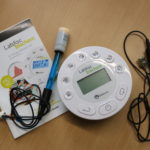Europäische Lernwerkstättentagung – Vernetzungs- und Arbeitstreffen der Lernwerkstätten in (Mittel)Europa › Foren › Austausch vorher, nachher … › How to Calculate Square Feet: A Clear and Confident Guide
- Dieses Thema ist leer.
-
AutorBeiträge
-
sadiearcher85
GastHow to Calculate Square Feet: A Clear and Confident Guide<br>Calculating square footage is a fundamental skill that is useful in a variety of situations, from measuring the area of a room for flooring or carpeting to estimating the amount of paint needed to cover a wall. Square footage is simply the area of a space in square feet, which can be calculated by multiplying the length of the space by its width.<br>
<br>To calculate square footage accurately, it is important to measure the space carefully. This means measuring both the length and width of the space and ensuring that the measurements are accurate to the nearest inch or centimeter. Once the measurements have been taken, simply multiply the length by the width to get the square footage.<br>
<br>There are many tools available online that can help with calculating square footage, including calculators and apps that can take into account irregularly shaped spaces. However, it is always a good idea to know how to calculate square footage manually, as this skill can come in handy in a variety of situations. With a little practice, anyone can learn how to calculate square footage quickly and accurately.<br>Understanding Square FeetDefinition of Square Footage
<br>Square footage is a unit of measurement used to determine the area of a space. It is a measure of the surface area of a two-dimensional space, such as a room or a piece of land. A square foot is the area of a square that measures one foot on each side. In other words, a square foot is a unit of area that is equal to 144 square inches.<br>
Importance of Accurate Measurements
<br>Accurate measurements of square footage are essential in a wide range of industries, including real estate, construction, and interior design. In real estate, the square footage of a property is a crucial factor in determining its value. Inaccurate measurements can result in overvaluing or undervaluing a property, which can have serious financial implications.<br>
<br>In construction, accurate measurements of square footage are necessary for determining the amount of materials needed for a project. Overestimating or underestimating the required materials can result in wasted resources or delays in the construction process.<br>
<br>In interior design, accurate measurements of square footage are essential for creating a functional and aesthetically pleasing space. Knowing the exact size of a room allows designers to choose appropriate furniture and decor that fit the space and enhance its overall look and feel.<br>
<br>Overall, understanding square footage and the importance of accurate measurements is crucial in a wide range of industries and applications. By ensuring accuracy in measuring square footage, individuals and businesses can avoid costly mistakes and achieve their goals efficiently and effectively.<br>Preparation for CalculationTools and Materials Needed
<br>Before calculating square footage, it is important to gather the necessary tools and materials. The following items are needed:<br>Measuring tape or laser measure
Pen and paper or calculator
Safety equipment (if necessary)<br>A measuring tape or laser measure is essential to accurately measure the length and width of the space. It is important to write down the measurements or use a Stop Drinking Weight Loss Calculator to avoid mistakes.<br>
Measuring the Space
<br>To measure the space, start by measuring the length and width of the room in feet. Measure from wall to wall, and record the measurements. If the space is irregularly shaped, divide it into smaller sections and measure each section separately. Then, add the square footage of each section together to get the total square footage.<br>
<br>It is important to account for any obstacles in the room, such as built-in furniture or fixtures. Measure around these obstacles and subtract their square footage from the total.<br>
<br>When measuring, it is important to wear safety equipment if necessary. For example, if measuring a space that requires a ladder, ensure the ladder is secure and wear appropriate footwear.<br>
<br>By following these steps and using the necessary tools and materials, calculating square footage can be done accurately and efficiently.<br>Calculating Square Feet
<br><br>
<br>Calculating square feet is an essential skill for anyone involved in construction, home renovation, or interior design. Knowing how to calculate square footage accurately can help you determine the amount of material needed for a project, estimate costs, and plan your budget. In this section, we will cover the basics of calculating square feet, handling irregular shapes, and adjusting for obstacles.<br>
Step-by-Step Calculation
<br>Calculating the square footage of a rectangular or square area is relatively simple. First, measure the length and width of the area in feet using a tape measure. Then, multiply the length and width together to get the total square footage. For example, if a room measures 12 feet by 10 feet, the calculation would be 12 x 10 = 120 square feet.<br>
<br>If the area you are measuring is not a perfect rectangle or square, you will need to break it down into smaller rectangular or square sections. Measure each section separately, calculate the square footage, and then add up all the square footage to get the total.<br>
Handling Irregular Shapes
<br>Calculating the square footage of irregular shapes can be more challenging. In such cases, breaking down the area into smaller rectangles or squares may not always be possible. One way to calculate the square footage of an irregular shape is to divide it into smaller, regular shapes such as triangles or trapezoids. You can then calculate the square footage of each shape and add them together to get the total square footage.<br>
<br>Another method is to use a grid system. Draw a grid over the irregular shape, and then count the number of squares that fall within the shape. Multiply the number of squares by the area of each square to get the total square footage.<br>
Adjusting for Obstacles
<br>When calculating the square footage of a room or area, it is essential to take into account any obstacles such as pillars, cabinets, or built-in furniture. To do this, measure the length and width of the area as if the obstacle was not there. Then, measure the length and width of the obstacle separately. Subtract the square footage of the obstacle from the total square footage of the area to get the actual usable square footage.<br>
<br>In conclusion, calculating square feet is an essential skill that can save you time and money in the long run. Whether you are a professional contractor or a DIY enthusiast, knowing how to calculate square footage accurately can help you plan your projects more efficiently and stay within budget.<br>Application of Square Footage
<br><br>
<br>Square footage is a crucial measurement in many industries. It is used for a variety of purposes, from determining the value of a property to calculating the amount of materials needed for a renovation project. In this section, we will explore some of the most common applications of square footage.<br>
Real Estate and Property Listings
<br>Real estate agents and property owners use square footage as a key factor in determining the value of a property. The square footage of a property is often listed alongside other important details, such as the number of bedrooms and bathrooms. This information is used by potential buyers to compare properties and make informed decisions.<br>
Home Renovation and Construction
<br>Square footage is also important in the home renovation and construction industries. Contractors use square footage to estimate the amount of materials needed for a project, such as flooring, paint, and drywall. This helps them to create accurate quotes for their clients and ensure that they have enough materials on hand to complete the job.<br>
Interior Design and Space Planning
<br>Interior designers and space planners use square footage to create functional and aesthetically pleasing spaces. They use this measurement to determine the size and placement of furniture, as well as the layout of the room. By carefully considering the square footage of a space, they can create a design that maximizes the available space and meets the needs of their clients.<br>
<br>In conclusion, square footage is a critical measurement in many industries. Whether you are buying or selling a property, renovating your home, or designing a space, understanding the square footage is essential. By using this measurement effectively, you can make informed decisions and create spaces that are both functional and beautiful.<br>Tips and Best Practices
<br><br>
Ensuring Measurement Accuracy
<br>To ensure the accuracy of square footage calculations, it is important to take precise measurements. Use a measuring tape or laser measuring tool to measure the length and width of the room, making sure to measure from the longest points. Be sure to measure all areas of the room, including alcoves, closets, and other nooks.<br>
<br>It is also important to take into account any irregularities in the room’s shape, such as bay windows or angled walls. Measure these areas separately and add them to the total square footage calculation.<br>
Using Calculation Tools and Software
<br>For those who want to simplify the calculation process, there are many online square footage calculators and software programs available. These tools can help you quickly and accurately calculate the square footage of a room or space.<br>
<br>When using a calculator or software, be sure to input the correct measurements and units. Double-check your calculations to ensure accuracy.<br>
<br>Another useful tool is a graph paper or floor plan software. Drawing a floor plan to scale can help you visualize the space and calculate the square footage more accurately.<br>
<br>In conclusion, taking precise measurements and using calculation tools and software can help ensure accurate square footage calculations.<br>Common Mistakes to Avoid
<br>Calculating square footage is a crucial part of any renovation or construction project. However, there are common mistakes that people make when calculating square footage that can lead to budget overruns, wasted materials, and project delays. Here are some of the most common mistakes to avoid:<br>
1. Incorrect Measurements
<br>One of the most common mistakes when calculating square footage is taking incorrect measurements. This can happen when using the wrong tools or not measuring accurately. Using a regular tape measure for large spaces can lead to inaccuracies. A laser distance measurer or a long, sturdy tape intended for architectural measurements can offer more accurate results. It’s also important to double-check measurements to ensure that they are accurate.<br>
2. Not Accounting for Odd Shapes
<br>Another mistake people make is not accounting for odd shapes when calculating square footage. For example, a room with a bay window or an angled wall will have a different square footage than a rectangular room. It’s important to measure each section of the room separately and then add them together to get an accurate total.<br>
3. Forgetting to Subtract Unusable Space
<br>When calculating square footage, it’s important to remember to subtract unusable space such as closets, hallways, and staircases. Failure to do so can result in overestimating the amount of usable space and can lead to purchasing too many materials or overestimating the amount of paint needed.<br>
4. Not Considering Ceiling Height
<br>Finally, when calculating square footage, it’s important to consider ceiling height. A room with a high ceiling will have a larger square footage than a room with a low ceiling. To calculate the square footage of a room with a high ceiling, multiply the length and width of the room and then multiply that number by the height of the ceiling.<br>
<br>By avoiding these common mistakes, you can ensure that your square footage calculations are accurate and avoid costly errors in your renovation or construction project.<br>Frequently Asked Questions
What is the formula for calculating square footage of a room?
<br>To calculate the square footage of a room, multiply the length and width of the room in feet. The formula is: Area = Length × Width. For example, a room that is 10 feet wide and 12 feet long would have an area of 120 square feet.<br>
How do you determine the total square feet of a house?
<br>To determine the total square feet of a house, you need to add up the square footage of each room in the house. You can use the formula: Total Square Feet = Area of Room 1 + Area of Room 2 + Area of Room 3 + … and so on, for all the rooms in the house.<br>
Can you explain the process to calculate the square footage of a wall?
<br>To calculate the square footage of a wall, measure the length and height of the wall in feet. Multiply the length and height to get the area of the wall in square feet. The formula is: Area = Length × Height.<br>
What is the method to convert measurements in inches to square feet?
<br>To convert measurements in inches to square feet, first convert the inches to feet by dividing the measurement by 12. Then, multiply the length and width in feet to get the area in square feet. The formula is: Area = (Length/12) × (Width/12).<br>
How do you calculate square footage given length, width, and height?
<br>To calculate square footage given length, width, and height, use the formula: Volume = Length × Width × Height. Then, to get the square footage, multiply the volume by 2 and divide by the sum of the length times the width, length times the height, and width times the height. The formula is: Square Footage = 2 × Volume / (Length × Width + Length × Height + Width × Height).<br>
What is the equivalent of a 12×12 room in square feet?
<br>A 12×12 room is equivalent to 144 square feet. To calculate the square footage, multiply the length and width of the room in feet. The formula is: Area = Length × Width.<br>max
Gast<u>1884</u>
max
Gast<u>316.4</u>
max
Gast<u>пове</u>
max
Gast<u>Bett</u>
max
Gast<u>John</u>
max
Gast<u>Jean</u>
max
Gast<u>life</u>
max
Gast<u>Афан</u>
max
Gast<u>Samu</u>
max
Gast<u>Цвет</u>
max
Gast<u>сове</u>
max
Gast<u>Crea</u>
max
Gast<u>Tesc</u>
max
Gast<u>Наза</u>
-
AutorBeiträge



